There are a handful of professions in which the gap between excellence and competence is especially large. Plastic surgeons. Olympic swimmers. And, yes, art advisors.
As the art market has grown precipitously over the past three decades, so has the business of art advising. There are simply too many art fairs, galleries, and auctions for an ambitious collector to canvas alone. Plus, the elite art advisor does a lot more than just look. They carry out original research to uncover overlooked gems, handle pesky elements of collecting like shipping, framing, and appraisals, create custom travel itineraries and art lookbooks, and continually push their clients to expand their horizons.
CULTURED consulted expert contributors, gallerists, art-fair executives, and collectors from around the globe to assemble a group of trustworthy and influential advisors shaping some of the world’s top collections. They range widely in age, offer expertise that stretches from Old Masters to ultra-contemporary, and work with clients across the tech, entertainment, sports, and finance sectors. What they share is a passion for hunting down the best work they can find and playing matchmaker with a collector who will treasure it. While their efforts often unfold behind the scenes, these figures are critical to informing what we value—and to building the art history of the future.
Meet the 20 professionals on CULTURED’s first-ever Power Advisors List below.
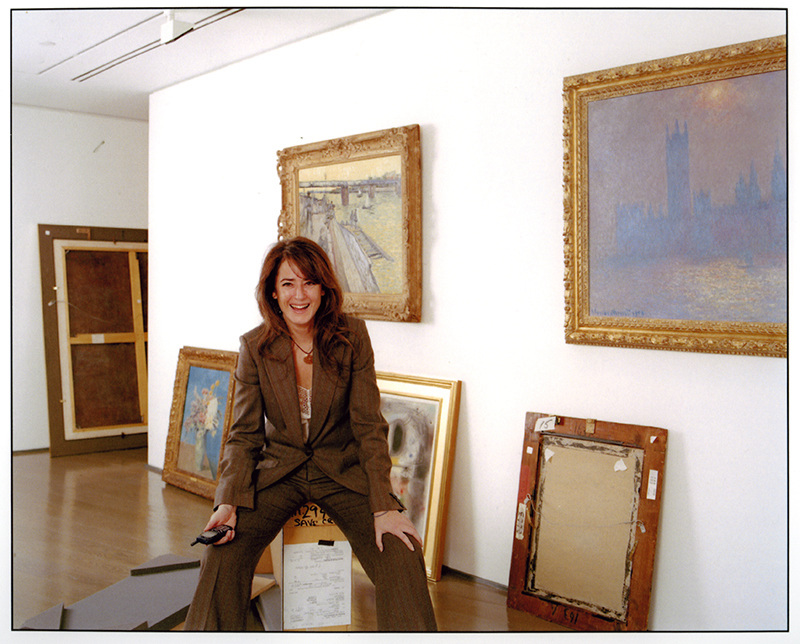
Abigail Asher
New York
Abigail Asher—recently on her own after a three-decade partnership with Barbara Guggenheim, with whom she represented corporations including Sony and Hollywood superstars like Tom Cruise—characterizes advising as an intimate exercise: “You form a relationship not just with the art, but also the person who’s on that collecting journey.” Focusing principally on modern and contemporary art, Asher serves foundations as well as individuals she says come from the uppermost echelons of finance, sports, entertainment, and philanthropy. When the foundation of CBS founder and chief executive William S. Paley set out to sell $70 million worth of works from its collection (including examples by Francis Bacon and Pablo Picasso) to support the foundation and New York’s Museum of Modern Art in 2022, Asher helped make the match with Sotheby’s. She frequently fields calls from estates with collections that were similarly formed decades ago and have to be handled with expertise in the current market. —Brian Boucher
What is the biggest mistake rookie collectors make?
Buying because the name is famous but it’s the wrong work by the right artist.
How long should someone spend looking at a work of art before they decide to buy it?
The time it takes you to fall in love with it.
What art world trend would you like to see come to an end?
Flipping. It destroys artists’ careers.

Art Intelligence Global
New York and Hong Kong
From its New York and Hong Kong offices, AIG, founded in 2021 by Sotheby’s veterans Amy Cappellazzo and Yuki Terase, has a special focus on the Asian market, which last year was second only to the U.S. in size, surpassing Europe, according to the firm. While at Sotheby’s, Terase helped cultivate a new generation of Asian collectors, leading the Hong Kong office to sales that topped $100 million, partly fueled by bold-faced names like Japanese collector Yusaku Maezawa. AIG brokers private sales, offers appraisals and market analysis, and helps artists develop their legacies. It also organizes buzzy, high-profile exhibitions like a recent presentation of Jeff Koons’s work in Hong Kong timed to coincide with the city’s Art Basel fair. —Brian Boucher
How long should someone spend looking at a work of art before they decide to buy it?
Amy Cappellazzo: I think when you know, you know. It depends on how quickly one’s nervous system can respond.
What unexpected art destination are you most excited to visit before the end of 2024?
Cappellazzo: The treasures in upstate New York are astonishing. Within the next year, I’m most looking forward to visiting several remarkable spots: the Munson Williams Proctor Arts Institute, in Utica; the Frances Lehman Loeb Art Center at Vassar College; the Campus in Claverack—the primary school bought by six New York galleries (Stefania Bortolami, James Cohan, Kaufmann Repetto, Anton Kern, Andrew Kreps, and Kurimanzutto) in a stroke of innovation; the Bard Center for Curatorial Studies in Annandale-on-Hudson and, of course, the Albright-Knox Gundlach Museum in my hometown of Buffalo.
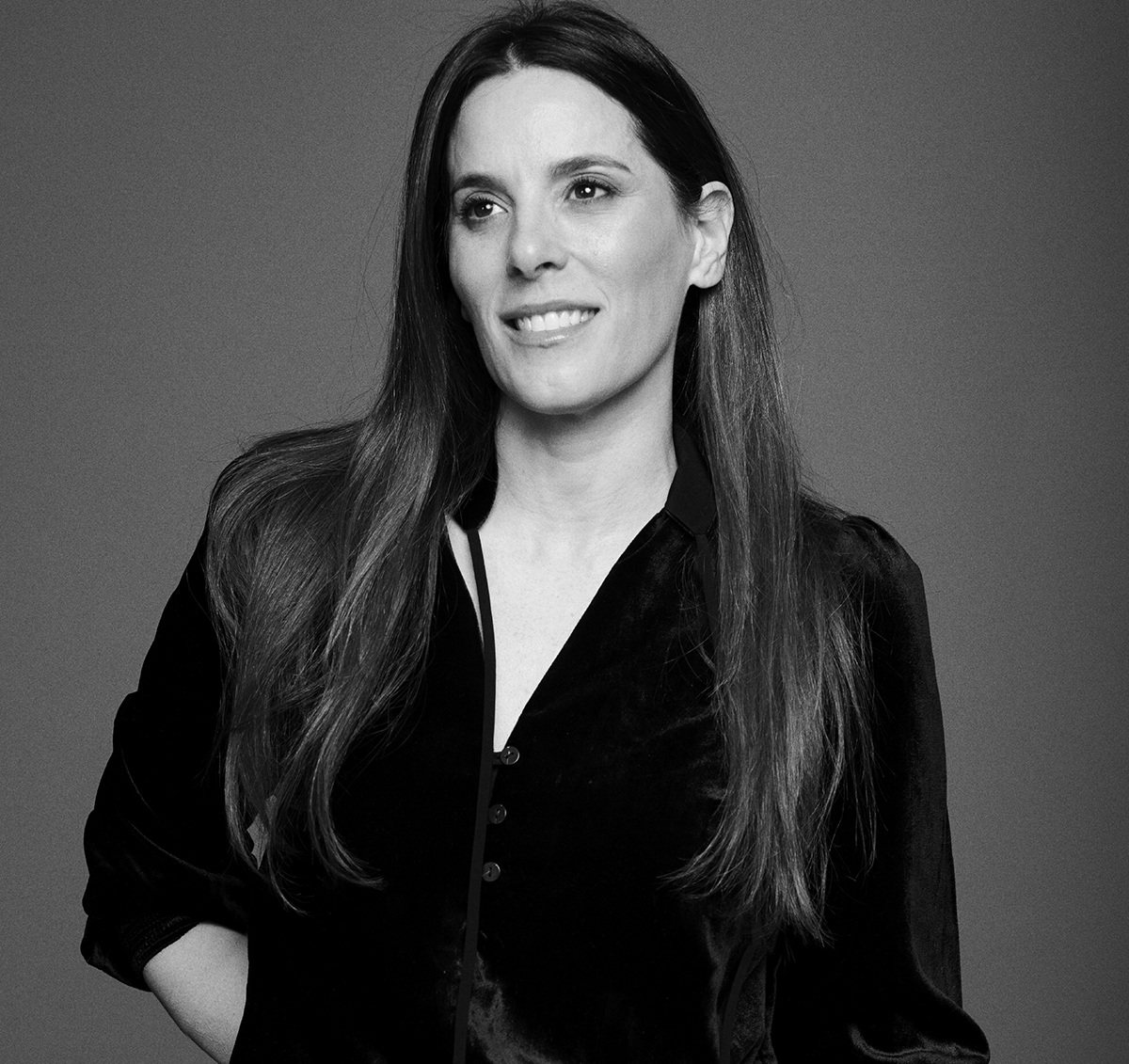
Eleanor Cayre
New York
Eleanor Cayre cautions her clients against buying what they love. That would make her job too easy. So instead of feeding them the pieces they want, she’ll often say to them: “Don’t be scared to buy something you don’t understand.” Working with modern and contemporary art, Cayre has personally adopted this maxim, providing vital support for artists throughout the years through her own collecting, as well as philanthropic support to the creative community by serving as a trustee at New York’s SculptureCenter and Artists Space. —Melissa Smith
Which artists are you most excited about right now?
There are some artists now who use figuration and a range of stylistic conventions to make some of the stranger and more thought-provoking art of our time. I would put Evelyn Taocheng Wang, Julien Nguyen, Ambera Wellmann, Shuriya Davis, and Kye Christensen-Knowles in this very broad category. I have been living with works by all four of these artists and they have been challenging and stimulating at an aesthetic and intellectual level.
What unexpected art destination are you most excited to visit before the end of 2024?
My list of museums around the world that I would love to visit is very long. While some of them are certainly not unexpected, like Glenstone in Bethesda, Maryland, or the Kimbell in Fort Worth, perhaps one of the more unexpected would be the Mishkan Museum in Israel, which served as inspiration for Renzo Piano when he designed the Menil in Houston.
What art world trend would you like to see come to an end?
There has been a big trend towards galleries pushing their artists into museum collections through the now widely familiar “buy one, give one” system. While I believe donations of art to museums is a great thing and have worked on such gifts as an advisor, I do think it would be nice to see curators lead collection acquisitions a little more in the coming years.

Jonathan Cheung and Ed Tang
Hong Kong, London, and New York
Young collectors and longtime friends Ed Tang and Jonathan Cheung founded Art-Bureau at the end of 2020, looking to help their millennial peers in Asia navigate the contemporary market. After a decade in the art world, Tang had stepped down from his position as vice president of Sotheby’s New York, while Cheung continues to do double duty as a PR executive. With offices in London, Hong Kong, and New York, the duo specializes in leading market darlings, naming works by Mark Grotjahn and Jonas Wood as notable placements. Services include museum and studio visits, overseas travel itineraries, collection and inventory management, art research, valuations, installation, and more. —Janelle Zara
What is the biggest mistake rookie collectors make?
Ed Tang: Our advice for new collectors is to start slowly—being too impulsive can be costly. It’s important to ask questions that might affect the decision-making.
How long should someone spend looking at a work of art before they decide to buy it?
Tang: Everyone reacts to art differently—it’s not necessarily a matter of time. Some collectors only commit to works that they’ve seen in flesh and take weeks to decide. Your taste and confidence grow in time. It’s important not to rush under pressure but sometimes you just know even from a jpeg if it’s a work you want.
What unexpected art destination are you most excited to visit before the end of 2024?
Jonathan Cheung: I recently visited Desert X AlUla [in Saudi Arabia], which was a surprising and exciting experience. Its natural habitat provides the most scenic backdrop for the artists’ site-specific works. I can’t wait for the next edition.
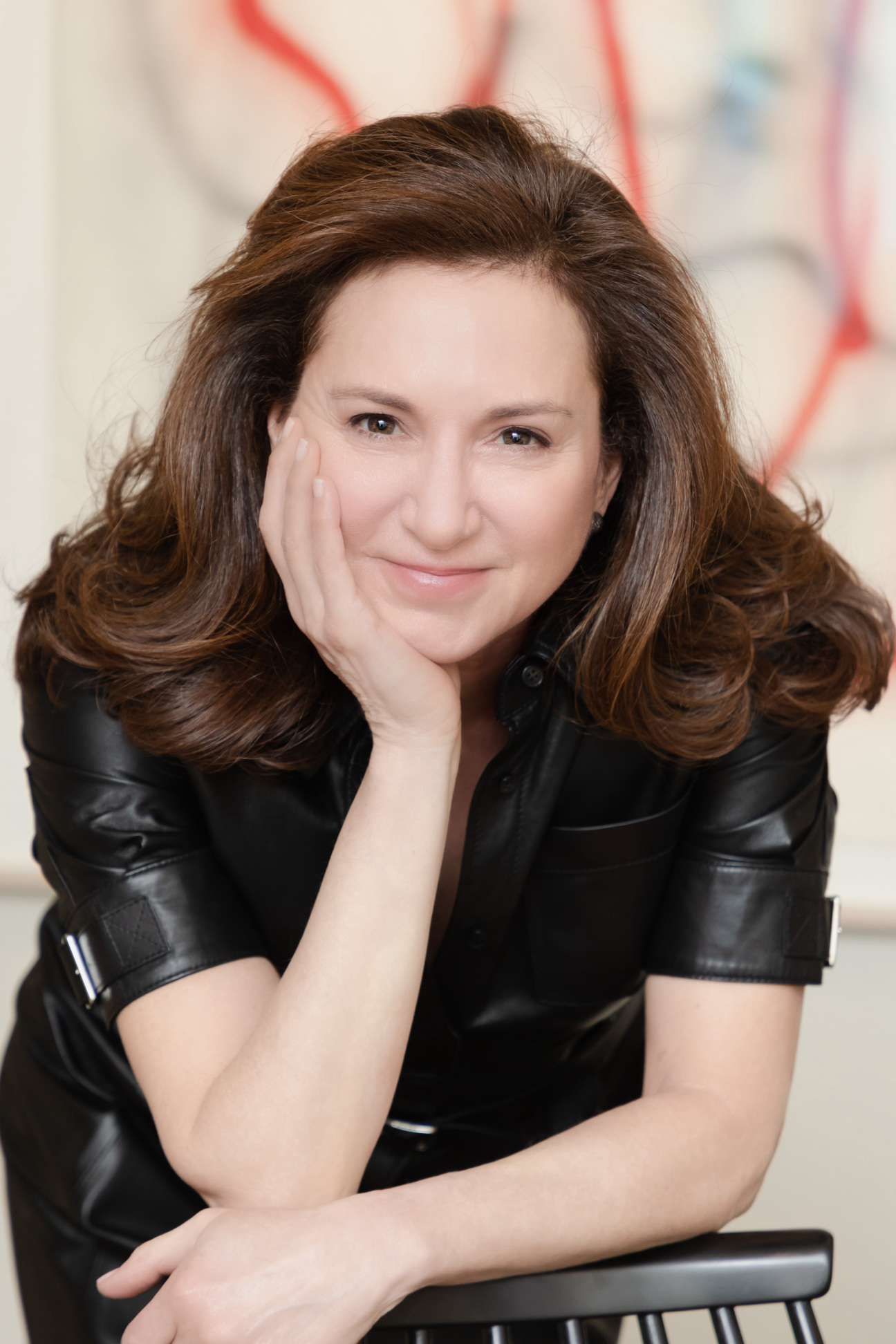
Wendy Cromwell
New York
Wendy Cromwell has said she considers her first stint in the business, working in the contemporary art department at Sotheby’s in the ‘90s, as “the ultimate insider experience.” Apart from all the industry contacts she made, she now has the ability to know, mercifully, “when to stop bidding!” Advising looked a lot different when she joined the field in 2002. As it expands—rapidly—Cromwell brings to the table not only a trained eye but a commitment to maintaining the ethics of a business that once was almost entirely upheld by a type of art world honor code. With expertise in 20th century art and a talent for spotting young artists with promise, she has served as president of the Association of Professional Art Advisors and created a fund to support contemporary art acquisitions at the Smith College Museum of Art. —Melissa Smith
What is the biggest mistake rookie collectors make?
New collectors sometimes make decisions based solely on emotion without doing research. I recommend consulting with a more experienced collector, museum curator, or art advisor to help to avoid expensive mistakes.
What art-world trend would you like to see come to an end?
The art industry has become overly financialized, which encourages speculation that can damage artists’ reputations and careers. The media should reduce coverage of the market and focus instead on the creative risk-takers: artists, curators, and art collectors who provide the world with vital cultural, not financial, capital.
How do you determine if a work of art is worth the investment?
There are many components, including the artist’s reputation and stature, level of creativity, historical context, market demand, visual appeal (which is subjective, but there are common parameters around desirability), and rarity. Just as important is having a personal connection to the art, because when markets shift, intrinsic value can often outweigh financial gain.
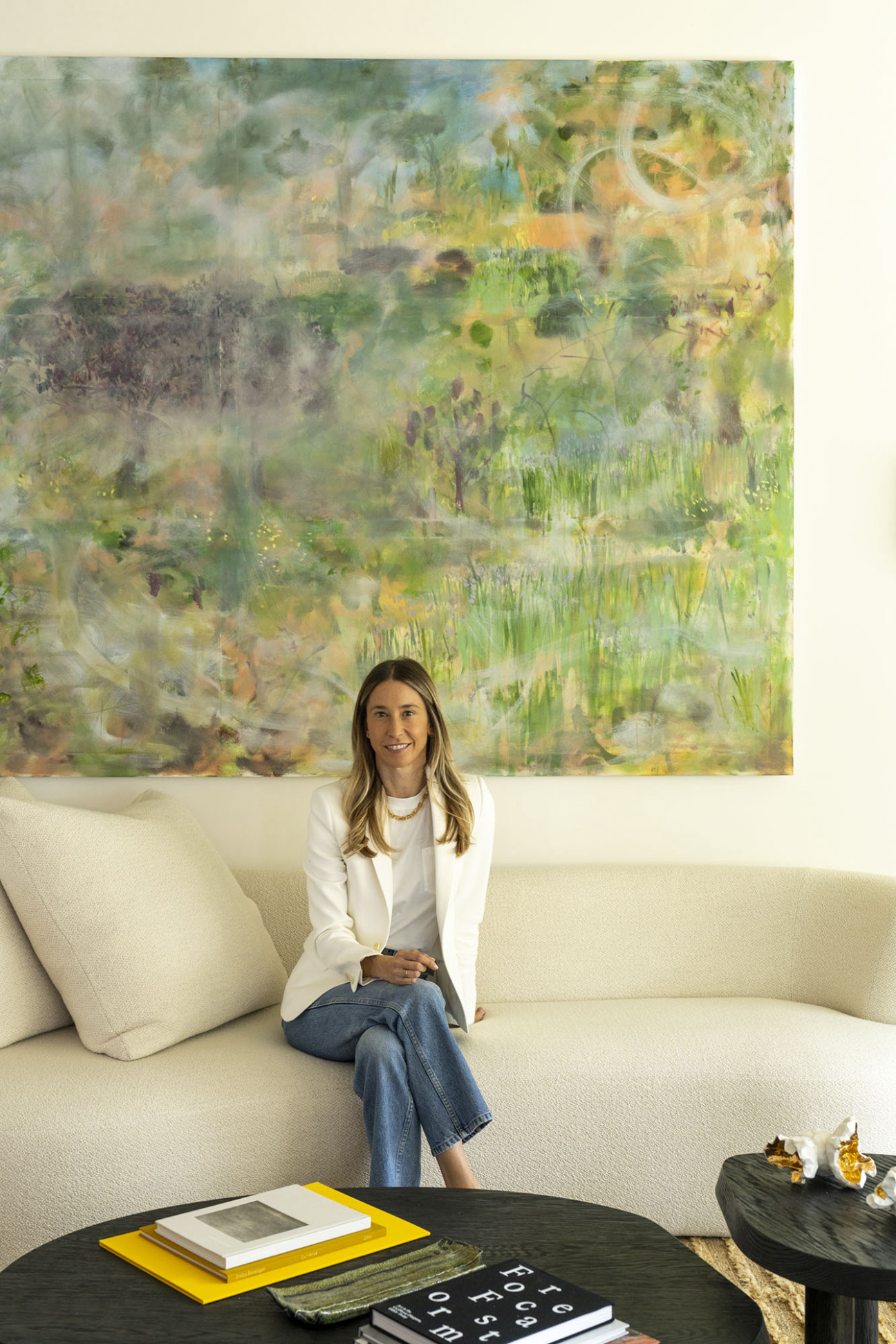
Meredith Darrow
Los Angeles
In a growing field of up-and-coming advisors in LA, Meredith Darrow stands out as a 20-plus-year art veteran. She started her career working in some of New York’s most respected galleries, getting her big break as an advisor by building a buzzy contemporary art collection for the late bottling magnate Rosa de la Cruz—who eventually, through that collection, became a key player in the Miami art scene. (Highlights from those holdings recently saw dynamic bidding at Christie’s, where 26 lots delivered $34.4 million.) Darrow started cultivating an LA-based business around the same time she started working with de la Cruz and has since become the advisor to the stars, counting celebrities like Serena Williams, Behati Prinsloo, Kim Kardashian, and Kendall Jenner among her cadre of clients. —Melissa Smith
What should collectors think about when just starting out?
I think it’s critically important for there to be an education period before jumping into buying. I find new collectors are often too eager or too reticent. I think time should be spent narrowing down artists of interest and which body of work by those artists is the focus. Once that happens, and the best work at the best possible price that you love is found, buying should happen swiftly.
Which artists are you most excited about right now?
Lauren Halsey, Trevor Shimizu, Lee Ufan, Emmi Whitehorse, Christopher Wool (eclectic!).
How do you determine if a work of art is worth the investment?
Of course I determine the current market value for any work being bought before purchase—however, nobody has a crystal ball and the market is volatile. I recommend collecting work you love that are great examples by the artists you love at the best price possible at the time of acquisition.
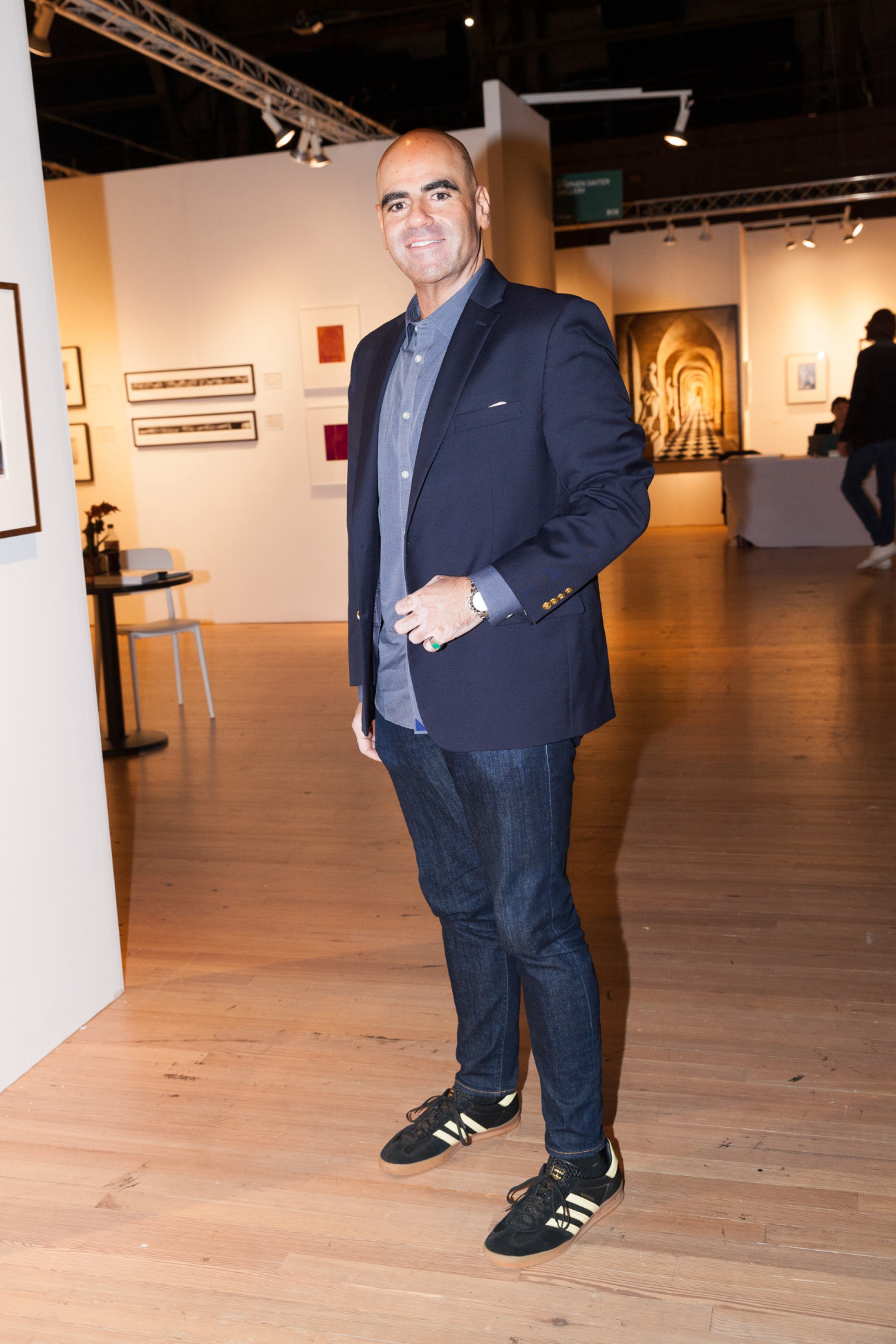
Ralph DeLuca
New York
Among the well-bred advisors gliding about the art world’s upper echelons, New York advisor Ralph DeLuca stands out. He is self-educated, maintains his New Jersey accent, and is known for not pulling punches. Specializing in contemporary art, he works with an enviable roster of deep-pocketed clients including Hollywood greats like Leonardo DiCaprio and Sylvester Stallone as well as MGM Resorts. And with access to top galleries like David Zwirner and Hauser & Wirth, he’s able to get his hands on works by the world’s most coveted artists. His trajectory proves that even the sometimes-snooty art world can make room for outsiders. —Brian Boucher
How long should someone spend looking at a work of art before they decide to buy it?
I tell new and aspiring collectors to go see as much art as you can—museums, auction houses, and gallery openings—and read some of the free newsletters like Artnet and ARTnews. After six months, let’s talk about what you should buy.
What art world trend would you like to see come to an end?
I would love for younger artists to stop thinking that rushing to leave the small galleries that built their market and going to a major gallery will help them. It rarely does. It often hurts their market, and they get lost in a giant program, and the only way it makes sense for the larger gallery is to prematurely increase primary market prices. Small galleries are a crucial part of our ecosystem, and they are the ones finding the young talent.
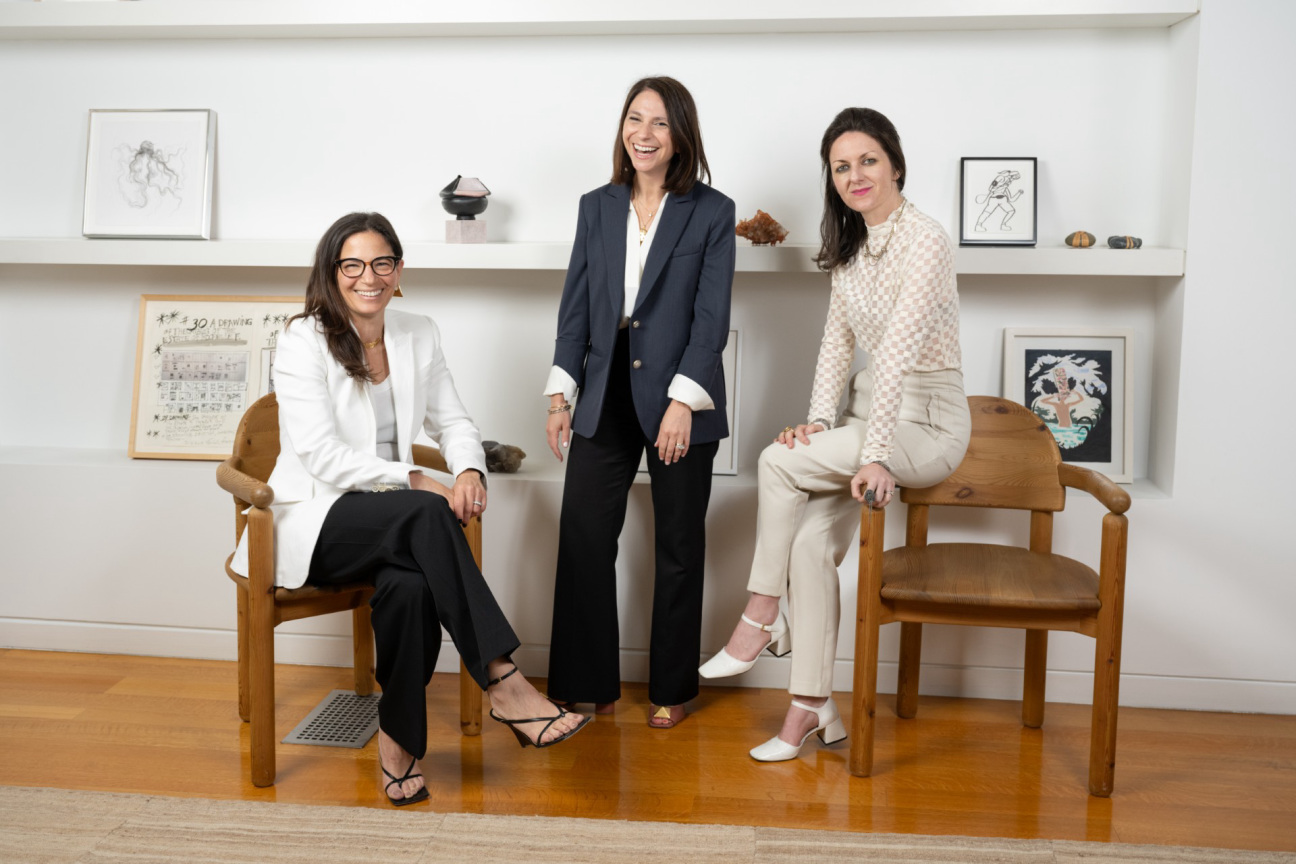
Goodman Taft
New York and Cambridge, Massachusetts
Abigail Ross Goodman cofounded Goodman Taft in 2010 and now runs it with former gallerists Molly Epstein and Ellen Langan. While collection-building sits at the core of their business, they also push the boundaries of what advisors can do philanthropically by engaging in institutional work and public art initiatives. Headquartered in Cambridge and New York, the team recently spearheaded the permanent installation of Nicole Eisenman’s Grouping of Works from Fountain, a set of three androgynous nudes lounging by a pool of water, in the city’s Fenway district. —Melissa Smith
What is the biggest mistake rookie collectors make?
Moving too fast and acquiring based on what is perceived as “hot” as opposed to taking the time to look, train their eye, and develop their own point of view.
How long should someone spend looking at a work of art before they decide to buy it?
This is a tough question because all timelines and decisions are subjective. Ideally a collector has had a meaningful encounter with a practice and has had some opportunity to study the art ecosystem holistically before seriously diving in, but part of passionate and authentic collecting must allow for acting opportunistically and on instinct.
Which artists are you most excited about right now?
The list is long. As a collective with many decades of art-looking amongst us, we are frequently excited by long-established artists who are confidently committed to their visual language (we were recently in the studios of Fred Eversley and June Leaf) and an authentic approach to exhibition-making (very inspired by Christopher Wool’s recent presentation in a former office space in downtown New York City). We are lovers of sculpture, and are consistently drawn to innovation in this medium by female practitioners specifically.
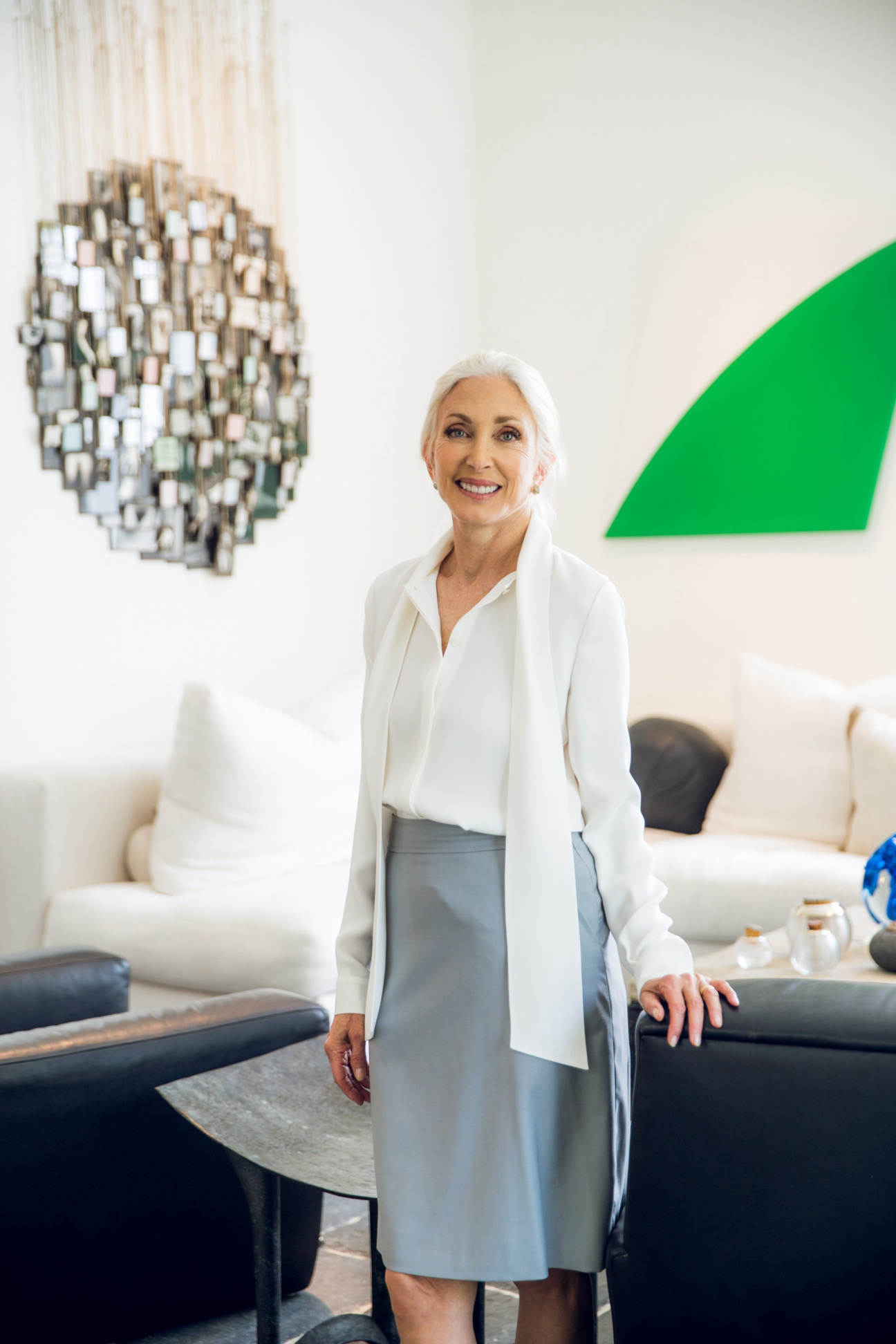
Barbara Guggenheim
Los Angeles and New York
With more than 40 years of experience under her belt, Barbara Guggenheim has been an art advisor for about as long as the profession has existed. (The Association of Professional Art Advisors was founded in 1980.) Guggenheim has more wide-ranging expertise than many, with experience in Old Masters, 19th- and 20th-century, and contemporary art. Long partnered with Abigail Asher, she returned to independent practice and maintains offices in Los Angeles and New York. Author of the 2016 book Art World: The New Rules of the Game—which Kirkus called “a charming passport to the unregulated art world”—she works with clients at all stages of their collecting careers and sees her role partly as an educator. Among her pupils: Hollywood titans Tom Cruise, Jeffrey Katzenberg and Steven Spielberg, along with corporate giants like Coca-Cola and Sony. —Brian Boucher
What is the biggest mistake rookie collectors make?
Buying with their ears and not with their eyes. They listen to what people say and they’ll buy a work that isn’t a good example of an artist’s work, or perhaps it’s not an artist they should buy at all.
How long should someone spend looking at a work of art before they decide to buy it?
I think it’s cumulative. It’s how many months or years you’ve spent looking, not just seeing something in that moment and knowing whether you should buy it or not; it’s a lifetime of experience that you bring to every viewing.
What art world trend would you like to see come to an end?
In 1990, the market turned, and by the time it turned back in 1995, people didn’t want the old artists, like Julian Schnabel and David Salle. I worry that may happen again. If the market goes down now, I worry that too many people will want to dump works, and then that colors the artists’ market.
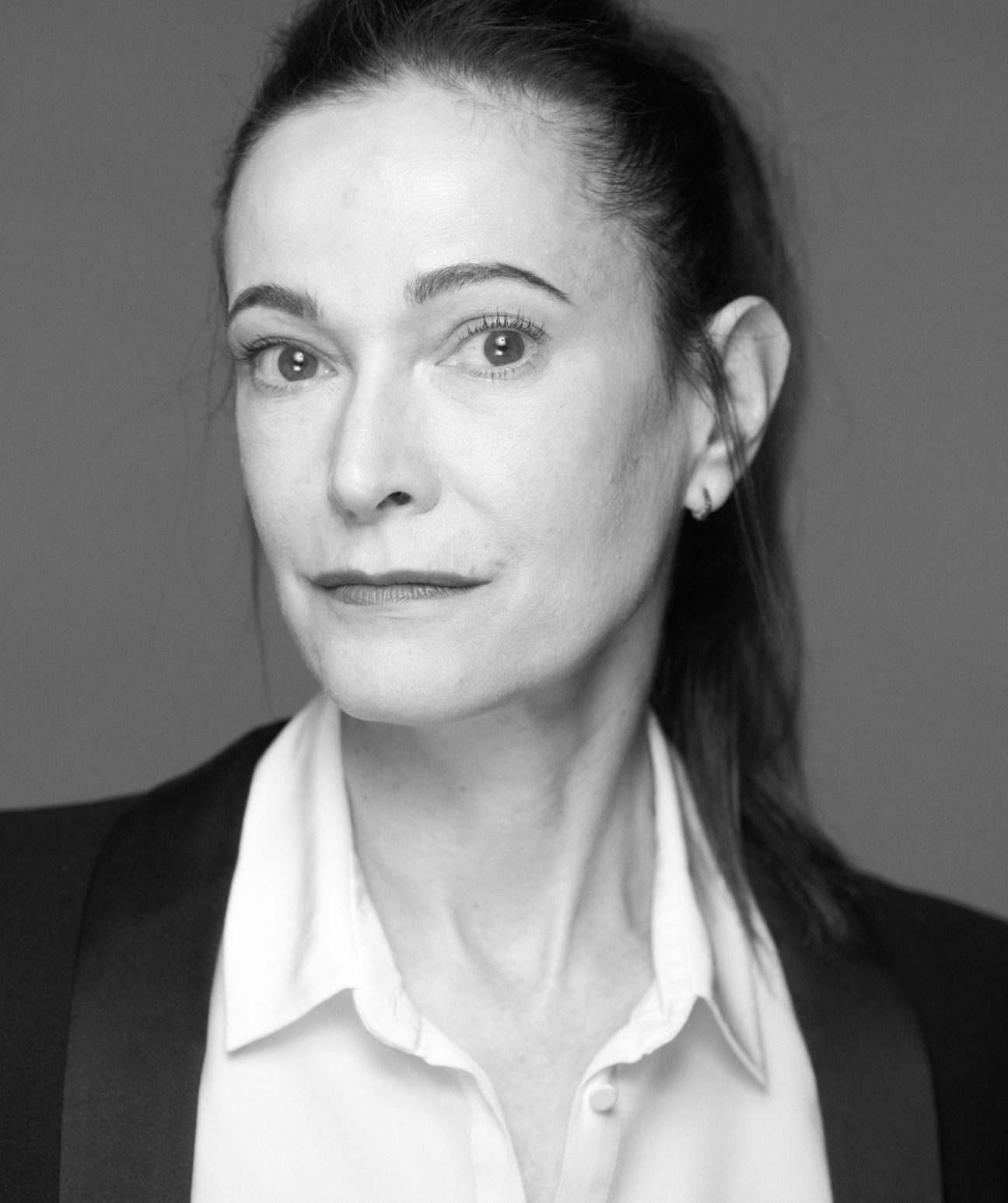
Jeanne Greenberg Rohatyn
New York
Jeanne Greenberg Rohatyn is the rare art-world operator who has managed to maintain a gallery business as well as a thriving art advisory. The founder of art and design gallery Salon 94 (which, for a two-year stint, was part of the dealer consortium LGDR before splitting off in 2023), Rohaytn works with artists including Ruby Neri, Karon Davis, and Marilyn Minter. An advisor even before she was a dealer, she maintains separate staffs for the two businesses. “I’m interested in building collections that are about their stories, not my stories,” she says of her clients. “I will learn everything there is to learn about ceramics because someone wants to collect ceramics.” Over the years, Rohatyn has worked with high-profile figures including Jay-Z and Beyoncé as well as Alex Rodriguez. She has done everything from building libraries for her clients to orchestrating performances. Years ago, she even organized annual art presentations at Rodriguez’s at-home batting cage in Miami during Art Basel Miami Beach. —Julia Halperin
What is the biggest mistake rookie collectors make?
I encourage a new collector to talk to dealers and to buy at least one work. We tend to pay more attention once our own money is involved. Buying primary is also to be a patron—which the arts need. The art on our walls describes who we aspire to be—please do not let it be neutral.
Which artists are you most excited about right now?
Just having returned from Australia, I am culling through the many painters (on bark, board, canvas, etc.) and weavers seen in museums, galleries, artist centers, and Indigenous communities. With a decade-long gallery commitment and on-the-ground study, I am now a confident advisor and a burgeoning expert of this work.
How do you determine if a work of art is worth the investment?
Study. We like to help create new markets as well. Often, it does not take more than a handful of collectors to help lift up undervalued work. We have systems of hierarchies to break—the greatest fiber artist should have more value than a mediocre painter, for example.
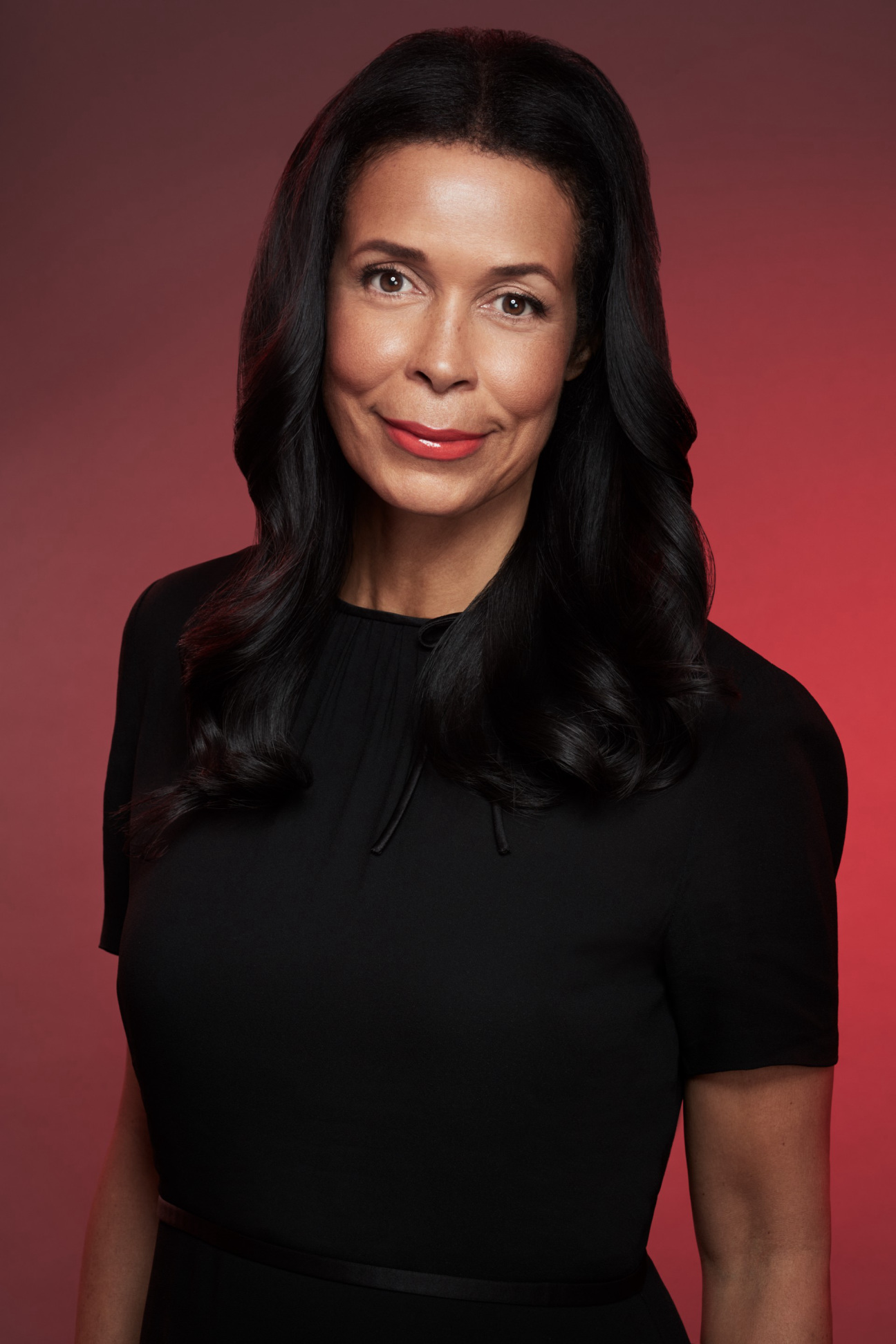
Kim Heirston
New York
After landing in New York in the 1980s, Kim Heirston carved out a career ahead of its time. Equipped with an art history degree from Yale, she became director of Stux Gallery in SoHo when few Black women were working in the art world. Before the term “art advisor” had truly entered the lexicon, she began independently advising in 1992, guiding collectors toward such then-emerging artists as Cindy Sherman and Richard Prince. These days, Heirston specializes in postwar, modern, and contemporary work, with clients who’ve included Aby Rosen and Salman Rushdie. (She also orchestrated a curatorial project at Sotheby’s for Oprah Winfrey in 2019.) One important perk she always provides clients, she says, is the opportunity to live with potential acquisitions for at least a few days “to really commune intimately with the work.” —Janelle Zara
What is the biggest mistake rookie collectors make?
Underestimating the importance of a work’s condition. This would be the equivalent of buying a vintage car without popping the hood to check the engine! The reality is, an artwork’s condition speaks volumes about its history, as well as its future. Crucial condition flaws not only diminish an artwork’s aesthetic value, but also its investment value and ability to be resold. So, for each and every artwork we place, we engage trusted independent conservationists—sometimes more than one—to carry out in-depth inspections.
How long should someone spend looking at a work of art before they decide to buy it?
When it comes to deciding on a work of art, there is no one-size-fits-all answer to the question of how long to spend contemplating. However, in general, I usually encourage my clients to take their time. Collecting is a reflection of one’s taste, personality, philosophy, and even values, and these elements have the power to dictate the atmosphere of one’s most intimate spaces. These decisions should not be made under pressure.
What unexpected art destination are you most excited to visit before the end of 2024?
I was thrilled to finally visit the Louvre Abu Dhabi on Saadiyat Island, which is the largest art gallery and museum in the Arab world.
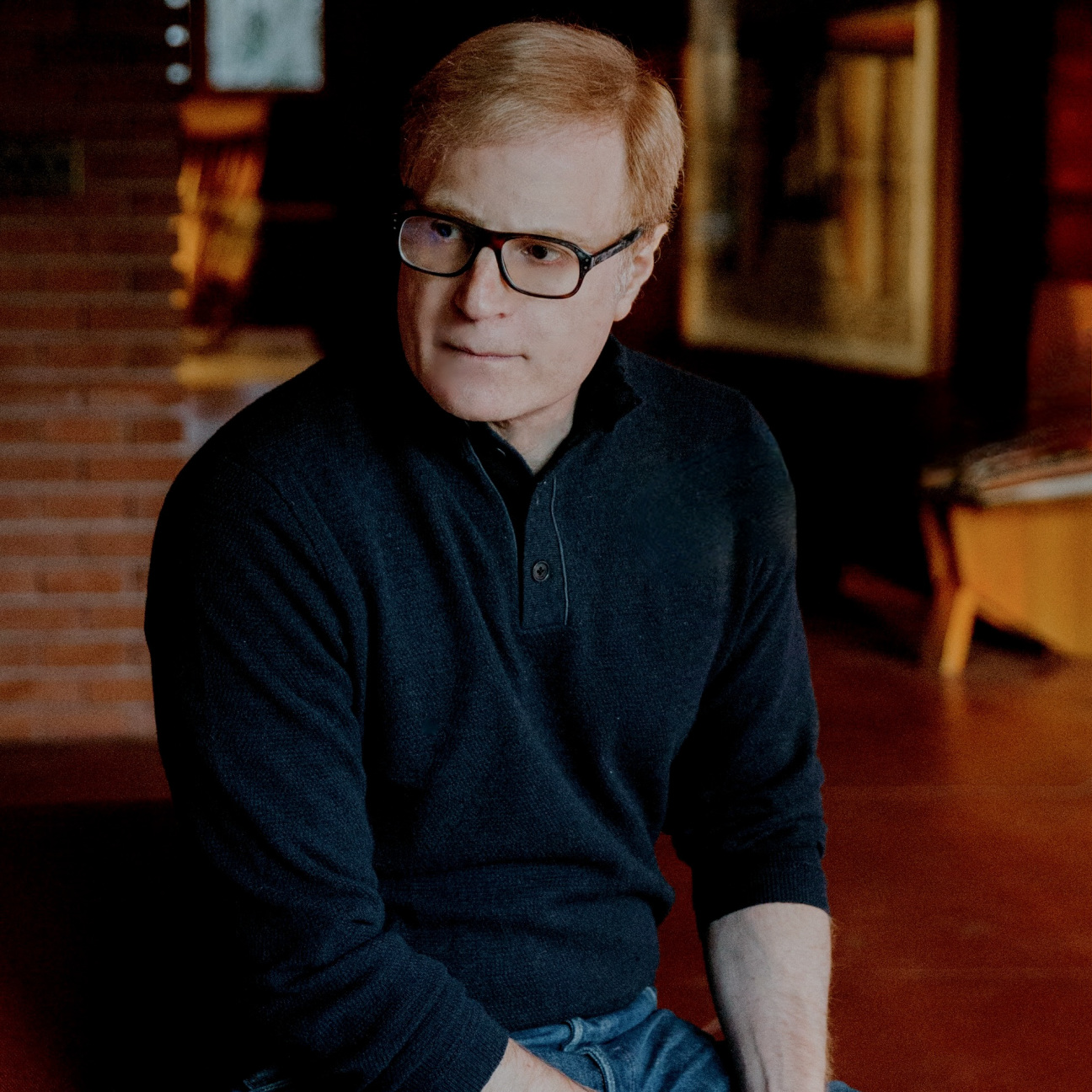
Todd Levin
New York
Over the course of more than 35 years, Todd Levin has become one of the highest-profile names in the business, boasting more than $1 billion in transactions with his New York advisory, Levin Art Group. Clients are strictly confidential, but Levin was known as longtime curator of hedge fund manager Adam Sender’s collection of Baldesssaris and Flavins. He was also an advisor to Ralph DeLuca, who is now a power advisor in his own right, and was spotted at least once escorting Leonardo DiCaprio down the aisles of Art Basel Miami Beach. Levin’s expertise is broad and thorough, evidenced by the 110-page dossier he compiled for clients ahead of TEFAF Maastricht this year. One of the biggest rookie collector mistakes, he told CULTURED, is “not taking the time required for a modest amount of education.” —Janelle Zara
What art destination are you most excited to visit before the end of 2024?
Venice, to review the 2024 Biennale—but based on the images I have seen thus far, I am less excited to see the Biennale than I am to revisit the historic masterpieces that have had a profound impact on me for decades.
What art world trend would you like to see come to an end?
I would like to see the art world trend of the concept of trends and fads die—as if the art world were only some ad hoc modish mash-up of Hollywood, Wall Street, and social media likes.
How do you determine if a work of art is worth the investment?
The transactional exchange between art and money is the dumbest and most simplistic component of whether one decides to purchase a work of art—a relatively bright trained golden retriever could do that. Determining if a work of art is worth the investment of one’s time, emotional energy, and intellectual effort is a different question. The answer is that expertise is the single determinant, and expertise is only arrived at after one has the requisite education and experience.
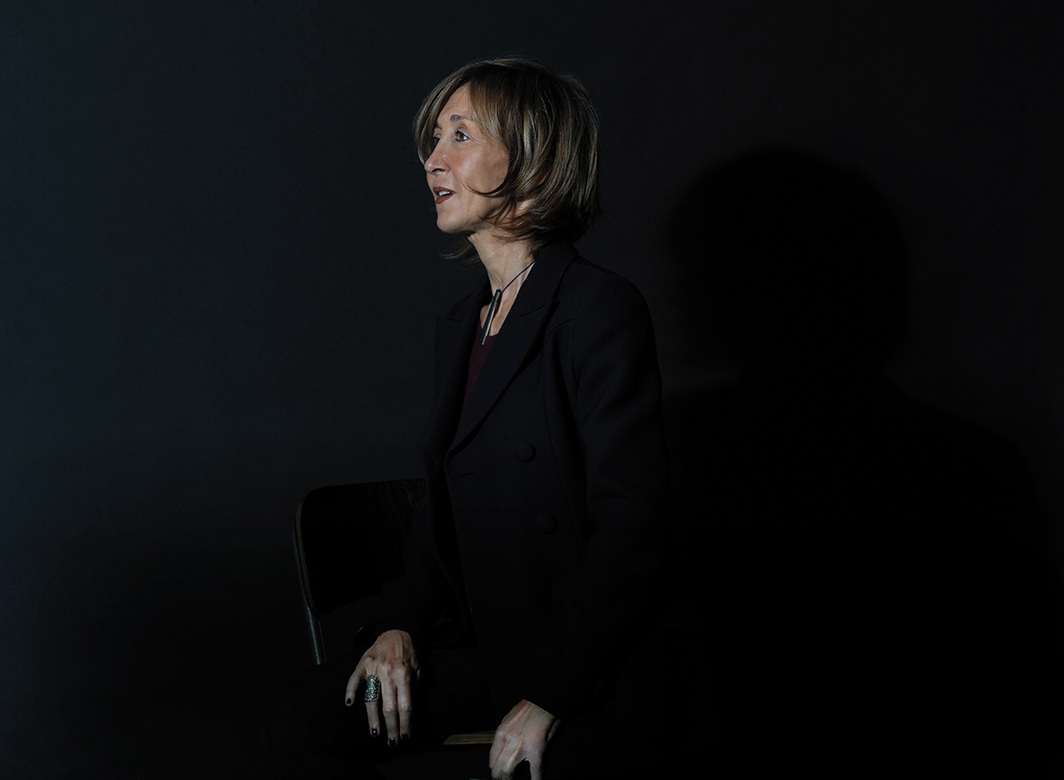
Patricia Marshall
Paris
Since she started out as a collector, Paris-based Patricia Marshall brings personal experience to advising clients. In fact, dealer Guido Baudach once told the Art Newspaper that “her passion for art often outstrips that of collectors.” Though Marshall admitted to the FT that when she started advising in 2003, she had “no qualifications whatsoever,” she has bagged big fish like LVMH chairman Bernard Arnault (now the world’s richest man), Mexico City fruit juice magnate Eugenio López (“He’s my baby, in a way”), and fashion group Zadig & Voltaire. Her next mission: convincing more French collectors—who have historically resisted working with advisors—how meaningful and significant the collector-advisor partnership can be. “Putting together a collection is a form of art,” says the contemporary art specialist. “It’s a construction.” —Brian Boucher
How long should someone spend looking at a work of art before they decide to buy it?
It should be an instant choice.
What unexpected art destination are you most excited to visit before the end of 2024?
Benin.
What art-world trend would you like to see come to an end?
Bad painting.
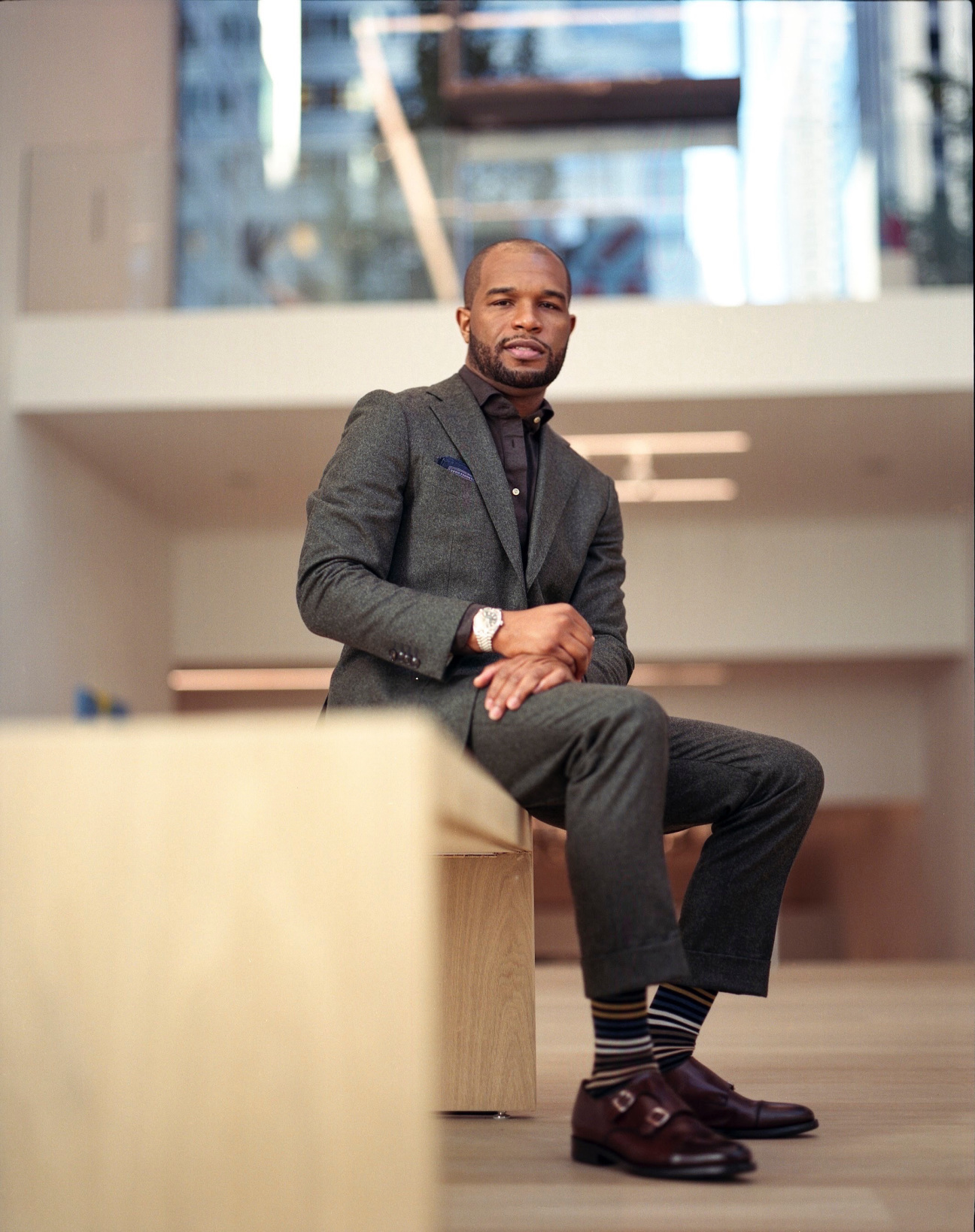
Anwarii Musa
New York
Anwarii Musa cut his teeth as an entry-level art handler at Sotheby’s—but it didn’t take long for him to develop close relationships with clients who appreciated his keen eye for spotting rising artists like Hugo McCloud, Derek Adams, and Mickalene Thomas before prices for their work shot into the stratosphere. His advisory, ArtMatic, was born in 2014 after “my clients asked, ‘Would you rather work for me than Sotheby’s?’” Ten years in, Musa and his small team have initiated a new partnership with the ever-growing Fine Art Group and work with a range of collectors, from established figures looking to level up like the Atlanta-based software entrepreneur Kent Kelley, to newer collectors like the Philadelphia- and New Orleans-based former NFL player Malcolm Jenkins. Anwarii also recently joined the board of trustees at the Queens Museum. —Julia Halperin
What is the biggest mistake rookie collectors make?
They ask the important questions but they don’t make the important moves. The best way to avoid that is to have a thesis behind your collection. There are so many conversations in art—politics, entertainment. Having a thesis will keep you focused in the right direction.
Which artists are you most excited about right now?
Emerging artists: Alteronce Gumby, Rachel Jones, Julia Jo. Artists I’ve been championing for a while: Hugo McCloud, Derek Fordjour, and Deborah Roberts.
What art-world trend would you like to see come to an end?
The hype of the NFT needs to come to an end. Digital art has been there for a long time—let’s focus on who is doing important things in that medium.
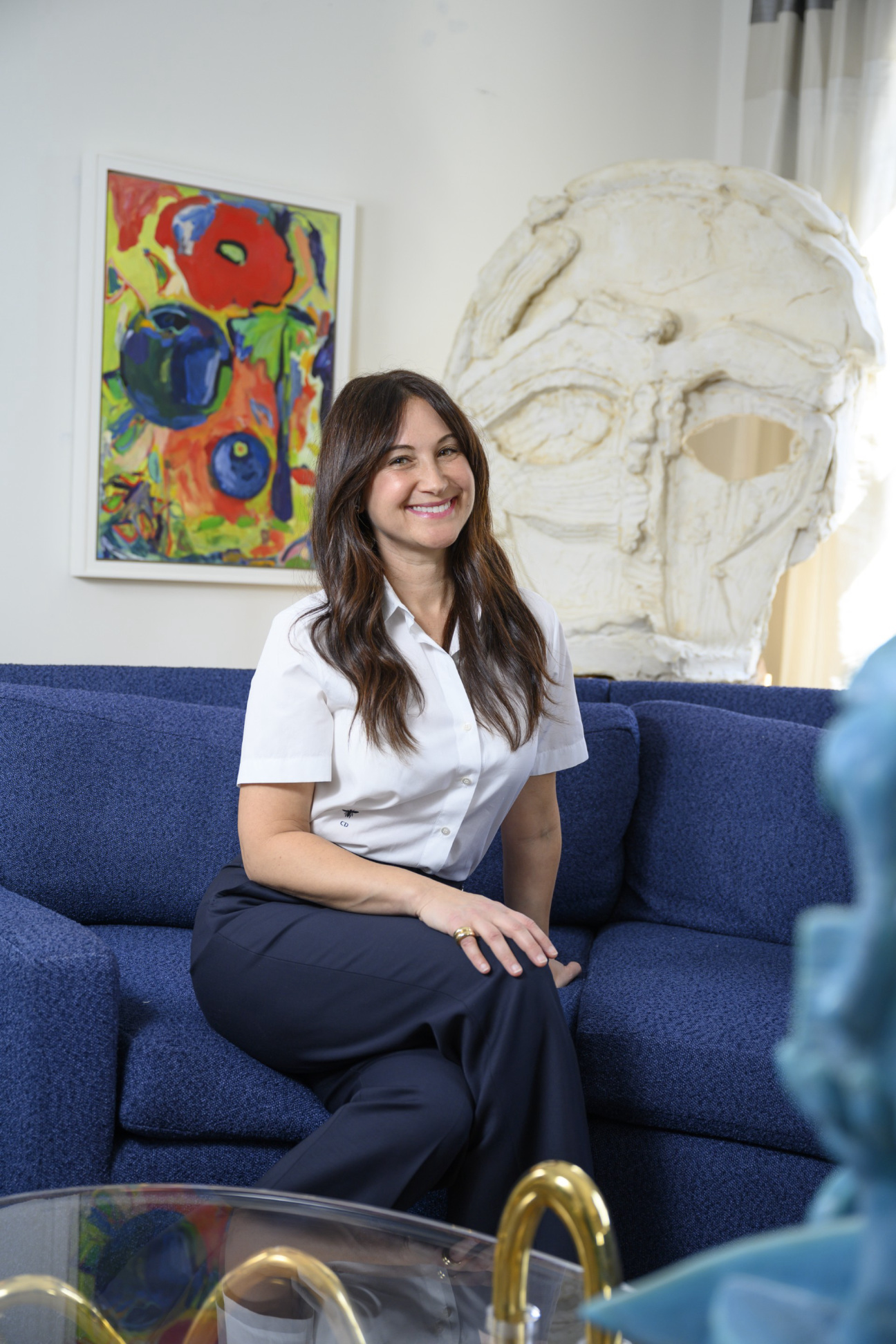
Erica Samuels
New York
During her senior year of high school, Erica Samuels made her way into an AP Art History course. “To learn history visually was just so cool to me,” she recalls. But what really cinched her investment in the contemporary art world, she says, was “Giuseppe Penone at Marian Goodman and the epic Matthew Barney Cremaster Cycle at the Guggenheim.” In 2015, she launched her eponymous advisory, Samuels Creative & Co. Today, her far-reaching practice includes facilitating commissions, developing art programs for hotels and public spaces, organizing auctions, and publishing limited-edition prints—though, she says, “my bread and butter is still the one-on-one advisory.”
What is the biggest mistake rookie collectors make?
Do not buy art while on vacation.
How long should someone spend looking at a work of art before they decide to buy it?
Sometimes it is instant! If you are new to it all, even if you have some background, maybe take six to 12 months to get the lay of the land.
Which artists are you most excited about right now?
Matthew Barney, Gwen O’Neil, Friedrich Kunath, Salman Toor, and Chloe Wise.
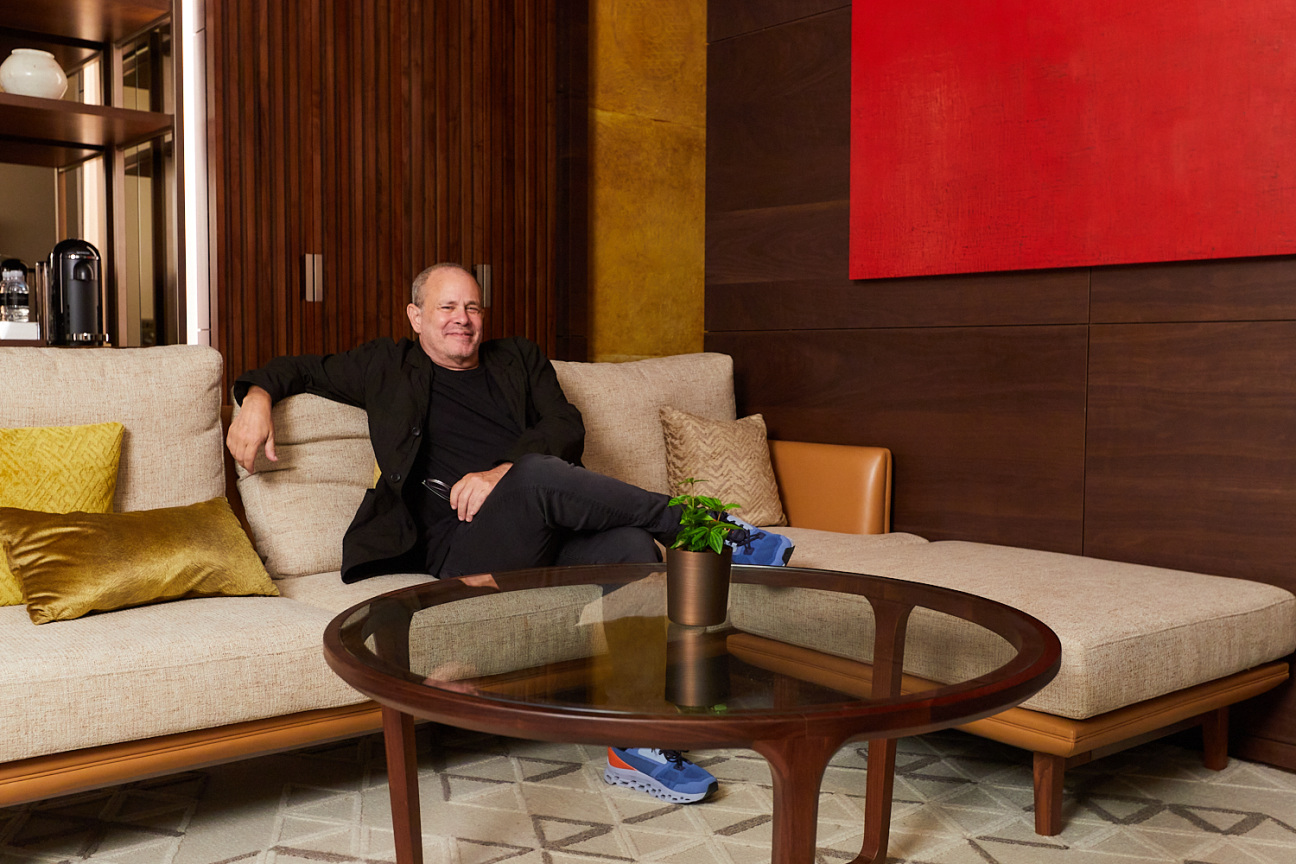
Schwartzman&
New York
Founded by Allan Schwartzman, who is known for major undertakings like the development of Brazil’s Instituto Inhotim, Schwartzman& is larger than most advisories. The writer-turned-curator-turned-advisor, who worked at Sotheby’s from 2016 to 2020, is supported by a team of nearly 20. Expanding on the kind of work advisors typically do, the firm offers services to artists (on strategic and estate planning) and to museums, as well as guiding collectors’ philanthropic giving. (Schwartzman& also serves as a locus for industry conversation through its work with the New York iteration of Talking Galleries and its must-listen podcast, The Art World… What If?, produced by Studio Burns.) A wing devoted to artist advisory is run by ex-dealer Simon Preston, while another ex-dealer, Augusto Arbizo, liaises with galleries. The Robert Rauschenberg Foundation was the firm’s first artist project; it has gone on to work with the estates of Conrad Marca-Relli, Ad Reinhardt, and Jimmy Durham. —Brian Boucher
What is the biggest mistake rookie collectors make?
Allan Schwartzman: There are a lot that are equally big, and some contradictory of one another: Buying impulsively. Fear of making a mistake. Not being courageous. Buying with one’s ears. Seeking too much consensus. Thinking they are making good financial investments. Not yet experiencing the difference between taste and staying power.
Which artists are you most excited about right now?
Schwartzman: Many who the market didn’t have the time to spend realizing how important they are. To name a few currently on my mind: Yoko Ono, Sigmar Polke, and Jimmie Durham. A more contemporary artist who is front of mind: LaToya Ruby Frazier. As to younger artists, I have to save those names for my clients.
What unexpected art destination are you most excited to visit before the end of 2024?
Zimbabwe.

Ana Sokoloff
New York
Ask people in the know to identify a top advisor for Latin American art, and Ana Sokoloff is almost always at the top of the list. As a Latin American specialist at Christie’s, she was instrumental in building markets for figures like Hélio Oiticica and Doris Salcedo. The Bogotá native has expanded on her interest in situating Latin American art within the global market through the advisory she founded nearly two decades ago. Over time, Sokoloff has also earned a reputation as someone who invests in platforms aimed at simply bringing beauty into our lives. She recently co-founded Must, an online marketplace for artisan goods, as well as Bodega Piloto, a multidisciplinary art space in her hometown. —Melissa Smith
What is the biggest mistake rookie collectors make?
Buying for the sole purpose of the thrill of the flip.
Which artists are you most excited about right now?
I’m very excited for Colombian abstract painter Fanny Sanín, who has been working tirelessly since the 1960s and is finally getting overdue recognition on a global scale. This year you can find her work in the main section of the Venice Biennale.
What unexpected art destination are you most excited to visit before the end of 2024?
I have been spending some time in the Nordic countries and want to continue exploring the amazing public and private institutions that are opening in the area. Particularly Kunstsilo in Kristiansand, Norway, as it relates to the work my partner and I have been doing in Colombia with Bodega Piloto and Team Layered in Malmö, Sweden.

Rob Teeters
New York and Dallas
Advisor and former architect Rob Teeters has an affinity for challenging work, in both the conceptual and physical sense. In his concurrent role as artistic director of The Power Station, collectors Alden and Janelle Pinnell’s Dallas nonprofit, he once allowed artists Tobias Madison, Emanuel Rossetti, and Stefan Tcherepnin to flood the mezzanine with six inches of water. Front Desk Apparatus, the New York office Teeters founded in 2006, is a space for intellectual stimulation, ranging from his current exhibition of four works by the elusive artist Cady Noland (complete with the standard disclaimer that the artist did not approve the show) to evening readings of Flaubert. “The key is to remain open and engage with not just the visual aspects of an artwork but also the ideas that are supporting it,” Teeters says. —Janelle Zara
What is the biggest mistake rookie collectors make?
Many novice collectors have a common misconception they can start building an art collection in a vacuum without an external dialogue with other collectors, an art advisor, and their local museums and institutions. It’s not a data-driven endeavor that can grow out of crunching numbers or based on a hot tip, but rather a highly nuanced engagement with a variety of factors and emotions that don’t exist in the professional world they come from. Having a small community of people to discuss and debate artists and exhibitions will answer a number of questions that otherwise might not be raised. If a collector is starting out and they have zero questions about the work they are seeing, I can guarantee they won’t be a good collector or won’t last long.
How long should someone spend looking at a work of art before they decide to buy it?
It’s very important to look at a lot of art before you buy anything, developing some definition of an aesthetic sensibility while remaining open to new things. Most importantly, it’s essential to understand what you don’t like and try to understand why. A collector will learn more about themselves understanding what they don’t like rather than making a long list of what they do.
Which artists are you most excited about right now?
I am most excited about artists from the 1980s and 1990s, underappreciated artists from the 1920s and ’30s, 19th-century European painters, and anonymous artists from antiquity. Basically, a lot of stuff that is out of fashion and being ignored at present but is core to art history.
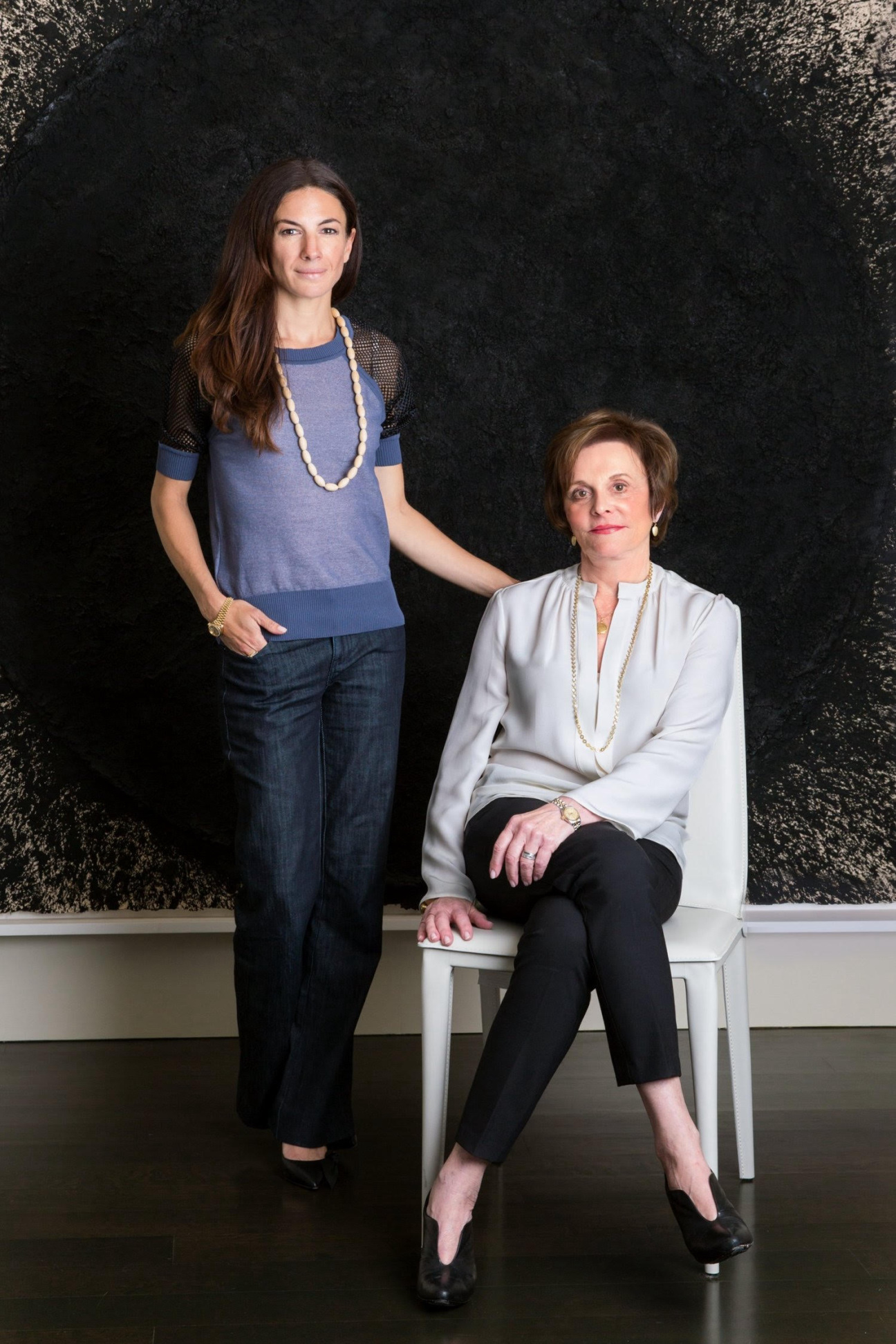
Zlot Buell
San Francisco
Here’s one way to create an art-advising power couple: put a 30-plus-year veteran with a deep well of industry contacts together with a Stanford alum with a strong interest in the tech space. That’s Zlot Buell + Associates. Mary Zlot started her advising business in 1983 (and famously consulted for the Fisher family, the Gap founders who have sent much of their star-studded collection to the San Francisco Museum of Art on long-term loan). She joined forces with upstart Sabrina Buell in 2012. With a focus on postwar and contemporary art, they are now the go-to team for young tech entrepreneurs in Silicon Valley and have projects that run the gamut from building the art program at the Dallas Cowboys Stadium to advising on public art at Stanford University. —Melissa Smith
What is the biggest mistake rookie collectors make?
When they buy with their ears instead of their eyes and hearts.
Which artists are you most excited about right now?
Three artists who show their work in Bay Area galleries are favorites of ours. Clare Rojas, a painter who deftly straddles figuration and abstraction, is represented by Jessica Silverman Gallery. Elisheva Biernoff is a painter who meticulously renders imagery from vintage photographs and shows at the Fraenkel Gallery. K.R.M. Mooney is an accomplished sculptor who is part of the artist roster at Altman Siegel Gallery and whose work is currently on view at the Whitney Biennial.
What unexpected art destination are you most excited to visit before the end of 2024?
In the fall, we are planning to visit City, Michael Heizer’s mile-long land art project in the Nevada desert. The project is inspired by ancient cities and has taken him decades to excavate and bring to life.
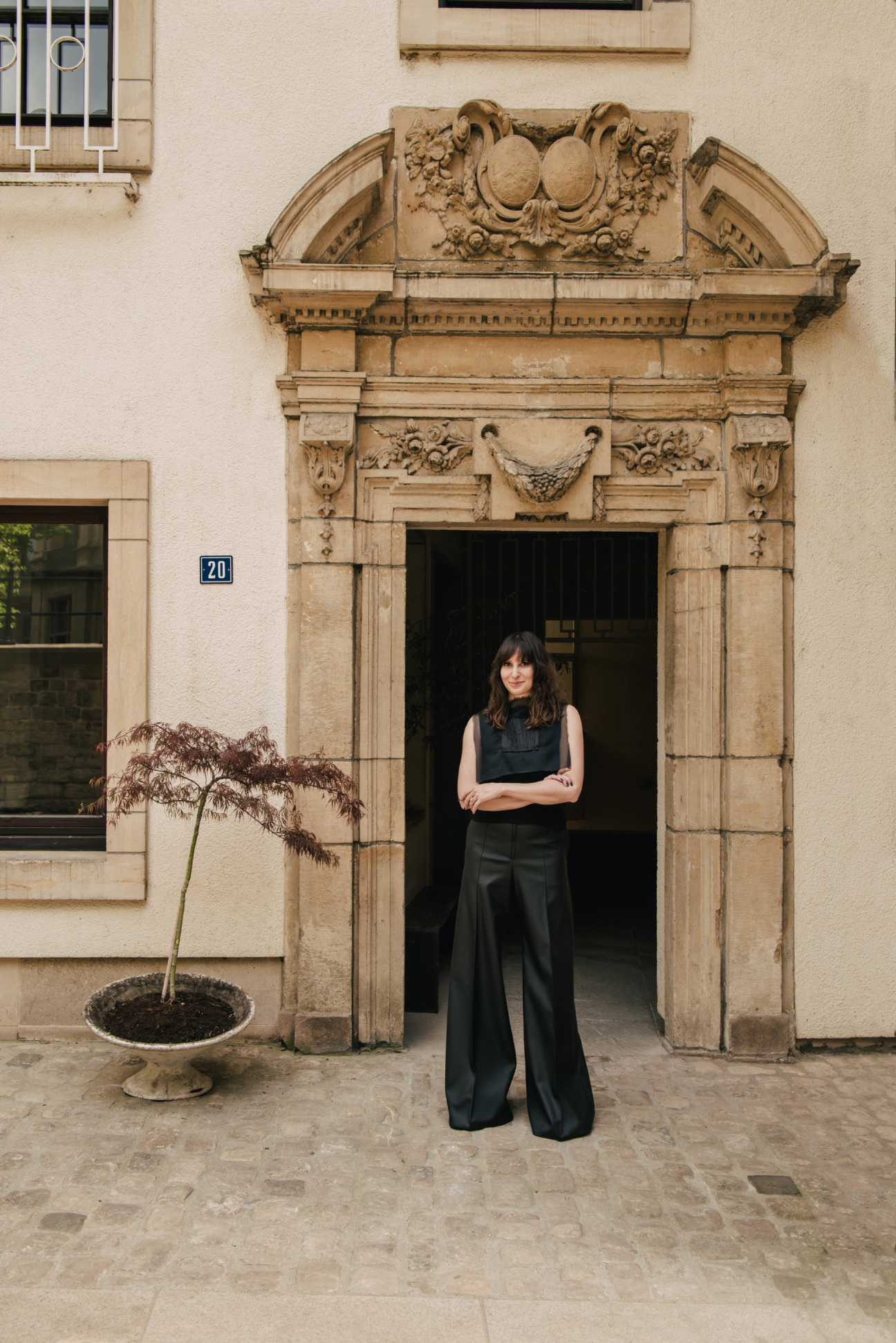
Sharón Zoldan
Los Angeles and Luxembourg
Sharón Zoldan remembers the exact moment she fell in love with art: when she saw a painting by Vincent van Gogh at the Getty Museum in Los Angeles many years ago. She was struck, she has said, by how much could be gleaned about the artist strictly by examining “the representation of his subjects.” Her path to advising was circuitous, studying Renaissance art and taking jobs at Christie’s and the Hammer Museum before launching SZ Advisory—which focuses on modern, postwar, and contemporary work—in 2010. An LA native who set up her first shop in her hometown, Zoldan recently opened a second location in Luxembourg. —Melissa Smith
What is the biggest mistake rookie collectors make?
Hesitating! Go with your gut; if you are working with an advisor who is well-versed—take their input and don’t overthink the first acquisition.
Which artists are you most excited about right now?
Heidi Bucher, Lee Bae, Barbara Chase-Riboud. It’s nice to see older artists finally getting their due, whether they’ve been overlooked or under-appreciated. Heidi Bucher’s latex skins are somewhat represented in European institutions, but she is just starting to gain more visibility stateside. Lee Bae just had a huge sculpture installed at Rockefeller Center last summer and is showing work in Venice for the Biennale. He has his own charcoal foundry and adeptly manipulates the delicate, luminous material. Barbara Chase-Riboud’s sculptures combining textiles and metals appear abstract, but often reference important historical moments or figures.
What unexpected art destination are you most excited to visit before the end of 2024?
Gotta give some credit to Luxembourg, where we have an office now. The renovations were a labor of love, and I sourced authentic architectural elements like 17th-century floorboards. The museum there, MUDAM, is a wonderful venue that has hosted important shows by artists like Lynette Yiadom-Boakye, Tacita Dean, and Danh Vo. The old city center is gorgeous, with a few important local dealers nestled among the medieval architecture. Not to mention its proximity to Paris, Brussels, and London.










 in your life?
in your life?

